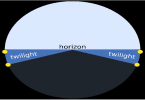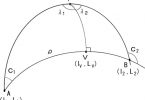- P accounts for present values of the error. For example, if the error is large and positive, the control output will also be large and positive.
- I accounts for past values of the error. For example, if the current output is not sufficiently strong, error will accumulate over time, and the controller will respond by applying a stronger action.
- D accounts for possible future values of the error, based on its current rate of change
With a Proportional, Integral and Derivative steering control system, the oscillation is minimized by modifying the error signal produced as the difference between the selected heading and the compass heading. Figure shows that a three-input summing-amplifier is used, called a dynamics amplifier, to produce a resultant output signal equal to the sum of one or more of the input signals.
The demanded rudder error signal is inspected by both the differentiator and the integrator. The differentiator determines the rate of change of heading as the vessel returns to the selected course. This sensed rate of change, as a voltage, is compared with a fixed electrical time constant and, if necessary, a counter rudder signal is produced. The magnitude of this signal slows the rate of change of course and thus damps the off-course oscillation.
Obviously, the time constant of the differentiation circuit is critical if oscillations are to be fully damped. Time constant parameters depend upon the design characteristics of the vessel and are normally calculated and set when the vessel undergoes initial trials. In addition, a ‘counter rudder’ control is fitted in order that the magnitude of the counter rudder signal may be varied to suit prevailing conditions






Hey there! The working principle of an autopilot system is based on advanced sensors, algorithms, and feedback loops that allow the system to control the vehicle’s trajectory without constant human input. It uses data from cameras, radars, and GPS to make decisions in real-time. By the way, if you’re looking for a platform where you can enjoy such seamless experiences, click here to check out Pin Up. Just like how a good system, like Pin Up, ensures a smooth gaming experience, the autopilot system continuously adjusts its parameters to ensure optimal performance. Whether it’s sports betting or casino games, they offer a variety of options for all types of players.